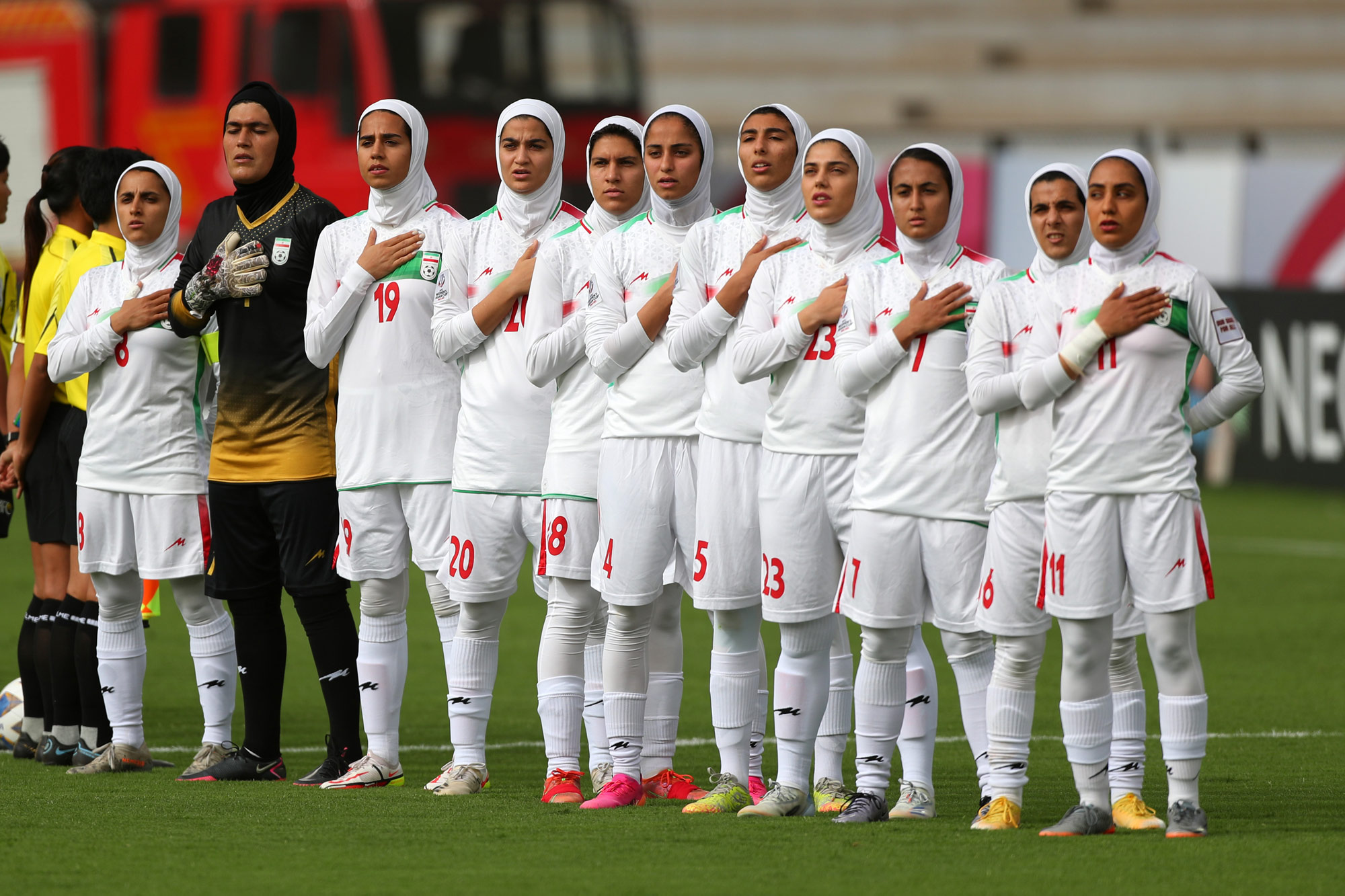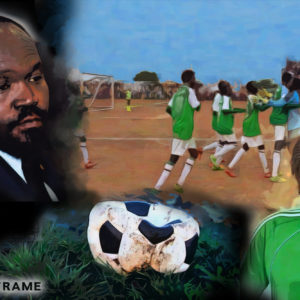There’s hope for women’s football in Iran
They may not have excelled at the Asian Cup in India, but the exposure brought the national team to the attention of local fans and things are improving for the women’s game.
Author:
4 April 2022

It was a small gesture that brought home to Melika Mohammadi that the team was achieving their dream. The Asian Football Confederation had left a wrapped chocolate in her hotel room in Mumbai, India, as a welcome to the 2022 Women’s Asian Cup. The chocolate, police escorts, training facilities and media protocols were all new and exciting for Mohammadi and Iran, as it was their maiden appearance at the tournament.
Even so, when they walked off the field following a hard-fought, goalless draw against hosts India in the curtain-raiser of the continent’s flagship competition, the Iranian team weren’t happy. “We were running all over the field,” says Mohammadi.
The team played emotionally, rather than with their heads. It was a solid game defensively, but Mohammadi says they’d have played better if they’d been more organised. “Our coaches were not satisfied with the result. After the game, they were angry at us.”
Related article:
Negin Zandi came close to scoring twice, but once the hosts took command they created chance after chance. The lowest-ranked team in the competition and with a young squad, Iran held firm for a historic first point. They had not enjoyed the luxury of the exposure trips to Brazil, Sweden, Turkey, Bahrain and the United Arab Emirates afforded to India. Instead, the Iranians had trained at home.
“Our fitness coach came to practice one day and he was like, you guys are awful. You’re not even comparable to the boys’ Under-13 academy teams,” says Mohammadi. “That was basically the level we were at.”
The Iranian football federation cancelled their warm-up camp in Belgium, an opportunity to gain international exposure as well as develop match fitness, without explanation. But taking part in the Asian Cup was a testimony to how far Iran and Mohammadi had come.
Newfound fame
Mohammadi grew up in the city of Shiraz with parents and an uncle who supported her playing football. When she was invited to an Under-13 girls’ team camp, it was the first time she saw other girls playing the sport. When her family moved to the United States, “soccer” helped her integrate socially. But she remained a national player for Iran, featuring in the 2015 Under-16 Women’s Asian Cup. South Korea, China and Thailand proved too strong in the group stages, but it was yet again a learning experience for the Iranians.
The profile of the women’s game was growing. Their participation in the tournament in January gave the team unprecedented exposure as without television broadcasts and matches on home soil, they had been invisible to Iranian fans up until then. Men are not allowed to attend women’s matches and vice versa in Iran. So the women’s team qualifying for the Asian Cup sparked interest at home, it was empowering.
Related article:
Mohammadi’s profile and that of the national team has skyrocketed in a nation infatuated with the game. “I have been receiving calls from all over. TV, radio… they all want you,” says Mohammadi. It is the first time women players have appeared on television in Iran. Before, only male footballers appeared on billboards and elsewhere.
“Football is a huge thing in Iran. It definitely affected women in football and women outside the game. One of our players is a mother, she brought her child. Women can now see that having a child is not a barrier to getting into things that you want to. Your role in society is not just to be a mother. You can do a lot of things.” Mohammadi says that now, when she’s out on the streets, the first thing people say to her is, “I watched your game against Chinese Taipei.”
Inexperience exposed
Group A of the Women’s Asian Cup was thrown into turmoil when India were disqualified because of an outbreak of Covid-19 in their team. Iran’s hard-earned point in the opening match was declared void, and defeats of 7-0 to China and 5-0 to Chinese Taipei – the sanitised version of Taiwan that sporting bodies use so as not to antagonise China – spelled a first-round exit. Physically exhausted, the inexperience of Mohammadi and her team was exposed. China was a football superpower and Taiwan reached the Women’s Asian Cup final twice in the 1990s.
“Bridging the gap with West Asia is important,” says Mohammadi, who played as a No. 6 in front of Iran’s defence. “It will take time. In about seven to eight years, we can do it if the federation doesn’t stop supporting us. We went to India on our own flight. We get the same gear as the men’s national team. The federation’s president called us after the China game. He was like: ‘Don’t worry about it. This is the start of women’s football. We are building a new future.’ It’s definitely getting better in terms of prizes and the money as well.”
Related article:
At home, Mohammadi plays for Khatoon in the Kowsar Women Football League, the semi-professional, domestic top flight with state-funded and private clubs. Her income from the national team affords her a comfortable, middle-class life but that doesn’t lessen her aspirations.
Iran, she says, can become a mainstay in the women’s game. But staging a match on home soil is the priority right now, to connect with local fans and demonstrate the team’s ebullience. “The federation is talking to several national teams,” says Mohammadi. “This was one of the demands that we had from the FA’s president. He was like, ‘I’ll do my best to make this possible.’ The coaches said, ‘These girls have to be seen.’”



